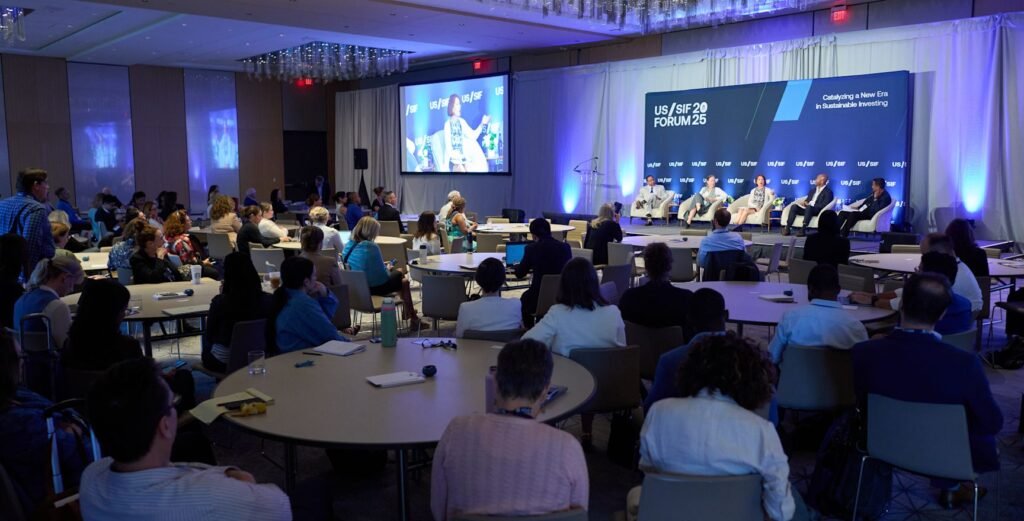
In an era defined by digital transformation, climate urgency, and shifting social values, Generation Z is emerging as a powerful force in reshaping the investment landscape. Their influence is not just about preferences—it’s about redefining the very language, frameworks, and expectations that underpin sustainable finance. Events like the US SIF Sustainable Investment Forum are becoming critical touchpoints in this evolution, offering a space where ideas are not only shared but refined, challenged, and mobilized.
This year’s US SIF Forum, held in Washington, D.C., brought together a diverse cross-section of the investment ecosystem—asset managers, financial advisors, institutional leaders, policy experts, and increasingly, young investors. The conversations that unfolded were not just about ESG metrics or portfolio performance. They were about the deeper infrastructure of sustainable investing: the language we use, the standards we lack, and the generational shift that demands a new approach.
Why In-Person Engagement Still Matters
For Gen Z, digital fluency is second nature. They navigate climate dashboards, financial apps, and social media with ease. Yet, as Natasha Gibson, VP of Marketing at Equities.com, observed, there’s still something irreplaceable about showing up in person. Forums like US SIF offer a rare opportunity for real-time dialogue—where uncomfortable questions can be asked, where nuance can be explored, and where momentum can be built through shared experience.
In a world saturated with virtual content, Gen Z recognizes the value of physical presence. It’s not just about networking; it’s about accountability. Being in the room with policymakers, advisors, and investors creates a sense of shared responsibility and urgency that digital platforms can’t replicate. These convenings are where the future of sustainable investing is actively shaped—not just theorized.
The Language Barrier in Sustainable Finance
One of the most pressing issues raised at the forum was the misuse and conflation of terminology within the sustainable investing space. Terms like “impact investing,” “values-based investing,” “faith-aligned portfolios,” and “ESG” are often used interchangeably, despite having distinct meanings and frameworks. This lack of clarity creates confusion for clients and advisors alike, undermining trust and making it harder to navigate the space effectively.
For Gen Z investors, who are deeply values-driven and expect transparency, this ambiguity is a major obstacle. They want to know exactly what their money is doing—what causes it supports, what risks it avoids, and what trade-offs it entails. When the industry fails to communicate clearly, it risks alienating the very demographic that is most eager to engage.
The forum highlighted the need for a centralized glossary or framework that defines these terms and distinguishes their intents. Without such standards, advisors are left to interpret and explain these concepts on their own, which can lead to misrepresentation, overpromising, and even greenwashing.
The Certification Gap: Who Is Qualified to Advise?
Another critical gap identified at US SIF is the absence of formal certification or training pathways for advisors specializing in sustainable investing. Unlike other areas of finance, there is no universally recognized credential that signals an advisor’s expertise in aligning financial strategies with environmental or social values.
This lack of structure opens the door to inconsistency and misinformation. Advisors may claim to specialize in ESG or impact investing without any standardized education or vetting. For Gen Z investors—who are skeptical of institutional authority and demand authenticity—this is a red flag.
The forum participants called for the development of a baseline curriculum and credentialing system that would help investors identify qualified professionals. Such a system would not only improve transparency but also elevate the advisors who are genuinely committed to thoughtful, informed guidance.
Gen Z’s Investment Philosophy: Beyond Binary Thinking
A recurring theme at the forum was the need to move beyond binary framing in sustainable investing. Too often, the industry presents a false choice: either build a portfolio entirely around social and environmental themes or avoid them altogether. This all-or-nothing approach doesn’t reflect reality—and it certainly doesn’t reflect Gen Z’s mindset.
Young investors aren’t asking for perfection. They’re asking for progress. They want to understand the trade-offs involved in their investments. They want to avoid certain exposures, support specific causes, and make informed decisions that reflect their values. The advisors who succeed with Gen Z are those who meet them in this middle ground—who offer nuance, transparency, and flexibility.
Unfortunately, much of the industry’s messaging still feels disconnected from how Gen Z actually thinks about money. Institutional language, outdated frameworks, and rigid product offerings fail to resonate. If the goal is to engage the next generation, the industry must evolve its communication style to be more inclusive, relatable, and data-driven.
The Data Is There—But the Narrative Is Missing
Perhaps the most frustrating insight from the US SIF Forum is that the data supporting sustainable investing is robust. Numerous studies show that portfolios incorporating ESG factors can perform as well—or better—than traditional ones. They often carry lower long-term risk and deliver measurable social and environmental outcomes.
Yet, despite this evidence, the public narrative remains skeptical. Many investors still take their cues from headlines and political rhetoric rather than performance data or case studies. This disconnect is especially problematic for Gen Z, who are inundated with conflicting messages and crave clarity.
The solution isn’t more white papers. It’s better storytelling. The industry needs to frame sustainable investing in ways that resonate with modern investors—using real-world examples, transparent metrics, and language that reflects their lived experience. Only then can the data translate into trust and action.
Where Do We Go From Here?
The US SIF Forum surfaced a collective realization: sustainable investing is at a crossroads. To move forward, the industry must evolve not just its products, but its infrastructure. That means:
- Clarifying terminology to distinguish between different approaches and intents.
- Establishing formal education and certification pathways for advisors.
- Reframing messaging to resonate with Gen Z and other modern investors.
- Bridging the gap between data and narrative through compelling, transparent storytelling.
This isn’t about creating a niche market. It’s about redefining how we talk about investing with intention—and making it easier for more people to see themselves in the process. Gen Z doesn’t need to be convinced that their money has influence. They already believe that. What they need is a system that respects their values, speaks their language, and empowers their decisions.
Conclusion: The Power of Showing Up
In 2025, transformation still starts with showing up. Forums like US SIF are more than industry events—they’re incubators for change. They offer a space where ideas can be challenged, refined, and mobilized. For Gen Z, these gatherings are essential. They provide the context, community, and credibility needed to turn values into action.
As sustainable investing continues to evolve, the role of young investors will only grow. Their expectations are reshaping the industry, demanding more transparency, more accountability, and more impact. The question is whether the industry is ready to meet them where they are—not just with data, but with dialogue.















